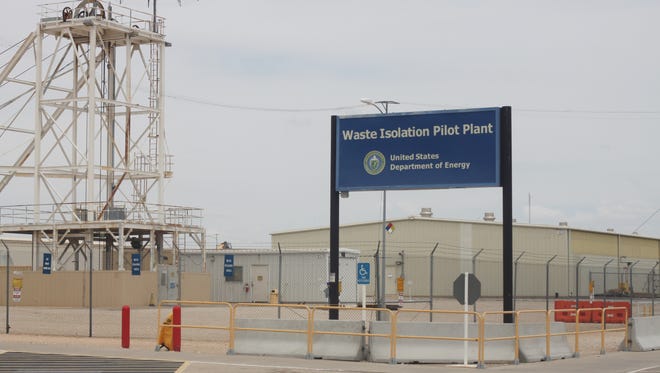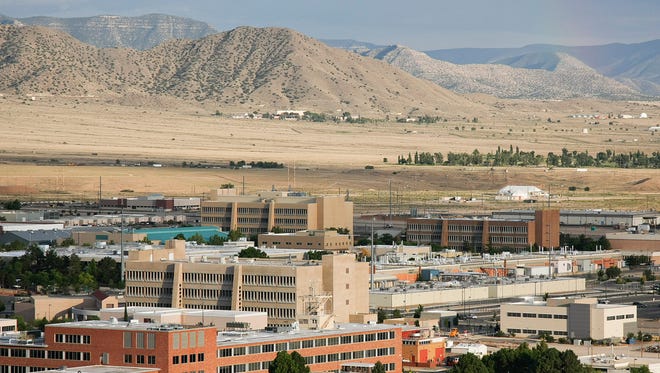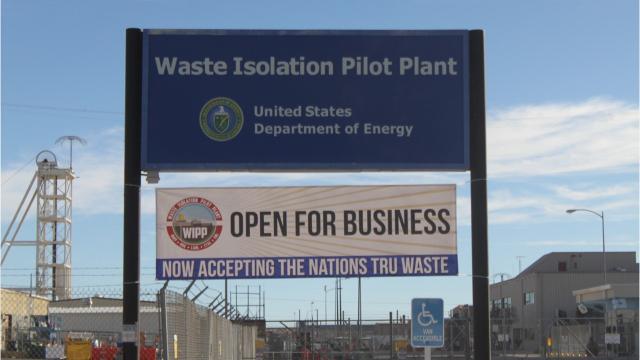Cleaning up the environment from nuclear activities across the U.S. will continue for at least another decade as the U.S. Department of Energy’s Office of Environmental Management (EM) published its priorities for 2021 to 2031.
The EM oversees operations at national laboratories and nuclear facilities across the nation, including three in New Mexico.
The Waste Isolation Pilot Plant in Carlsbad, Los Alamos National Laboratory in Los Alamos and Sandia National Laboratory in Albuquerque were all expected to continue important projects in nuclear research, development and remediation through the next 10 years.
More:WIPP: Town hall planned after fan test results show radiation levels met safety standards
In a letter from Acting Assistant Secretary of Energy for Environmental Management William White included with the priorities, he said the Office achieved several milestones in 2020, despite the COVID-19 pandemic.
White said efforts were underway to accelerate clean up and disposal of nuclear waste, while also demolishing contaminated buildings left over from past nuclear operations since World War 2 and remediating soil and groundwater.
“Despite the COVID-19 pandemic, EM achieved a historic slate of accomplishments in 2020, marking an inflection point for the program,” White wrote. “Collectively, these achievements have ushered in a new era for EM, setting the stage for accelerating cleanup momentum across the complex.”
More:Waste Isolation Pilot Plant aims to expand underground facility to hold nuclear waste
Here are the main priorities for EM’s New Mexico sites for the next decade.

Waste Isolation Pilot Plant
WIPP is the nation’s only deep, geologic repository for low-level transuranic (TRU) waste where the waste is permanently entombed in a salt formation about 2,000 feet underground.
TRU waste is made up of clothing materials, equipment and other items radiated during nuclear activities and is shipped to WIPP in southeast New Mexico from DOE sites across the nation.
As of Tuesday, when the priorities were published, the DOE reported 2.44 million cubic feet of TRU waste was disposed of at WIPP, about 39 percent of its statutory limit, and that it was expected the facility would continue to operate beyond 2050.
More:DOE planning to increase down-blended plutonium shipments to Waste Isolation Pilot Plant
In 2020, WIPP’s accomplishments included starting construction of a new utility shaft hoped to improve airflow in the underground while maintaining at least five shipments of waste accepted per week and finishing construction of an access road on the north end of the facility to divert area traffic away from the site.
Through 2031, the DOE expected about 883,000 cubit feet of TRU waste would be emplaced at WIPP, while EM planned to complete mining the eighth disposal panel by the end of 2022.
Other work at WIPP would focus on maintenance and infrastructure improvements, with a rebuild of the ventilation system known as the Safety Significant Confinement Ventilation System (SSCVS) to be complete by the end of 2024.
More:‘Sparking’ nuclear waste drum at Los Alamos National Lab leads to evacuation at WIPP
The SSCVS will increase WIPP’s available airflow to 540,000 cubic feet in the underground, allowing mining and waste emplacement operations to occur simultaneously.
Los Alamos National Laboratory
At Los Alamos National Laboratory (LANL), EM is focused on restoring land contaminated with radiation during the Cold War and Manhattan Project when some of the first nuclear weapons were developed and tested in New Mexico.
Cleaning up LANL means remediating soil and ground water while also deactivating and decommissioning buildings no longer needed at the site.
More:Checking in: WIPP maintenance work ‘on schedule’ during 2-month operations pause
More than 2,100 areas were identified as contaminated by radiation at LANL, records show, with more than half cleaned and closed. This ranged from small spill sites to large landfills covering multiple acres.
EM continued the process of characterizing and managing two groundwater contamination plumes in the areas.
One, containing hexavalent chromium was being remediated by pumping the water to the surface, removing the contaminant and reinjecting while another was still being characterized.
More:Staffing, scheduling problems imperil projects at Waste Isolation Pilot Plant, report says
LANL holds about 400,000 cubic meters of hazardous radioactive waste mostly buried at 26 disposal areas throughout the site. Eight of the areas were closed and another 3,500 cubic meters of TRU waste is being held and planned for disposal at WIPP.
In the first half of 2020, contaminated materials were discovered in land previously conveyed to Los Alamos County by the DOE and was excavated and removed with additional screening continuing in 2021.
Other accomplishments last year at LANL included 67 cubic meters of TRU waste repackaged for WIPP, while an investigation, remediation and restoration of soil was completed per commitments to the State of New Mexico.
More:Nuclear waste project in southeast New Mexico delayed as feds demand answers
In the next decade, the DOE plans to continue its work in addressing the water plumes while also characterizing more TRU waste for disposal at WIPP and cleaning up contaminated soil.

Sandia National Laboratories
EM’s work at Sandia is focused on an area of the Kirtland Airforce Base near Albuquerque where operations include remediating inactive waste disposal areas and addressing three plumes of contaminated groundwater.
In 2020, Sandia scientists continued work in characterizing the three groundwater sites and developing remedies.
Looking ahead, 2021 will mark the second year of characterization efforts for nitrate contamination using eight monitoring wells, four of which were installed in 2019.
By 2031, EM expects to complete its work at Sandia and transfer the site the National Nuclear Security Administration.
Adrian Hedden can be reached at 575-618-7631, achedden@currentargus.com or @AdrianHedden on Twitter.







